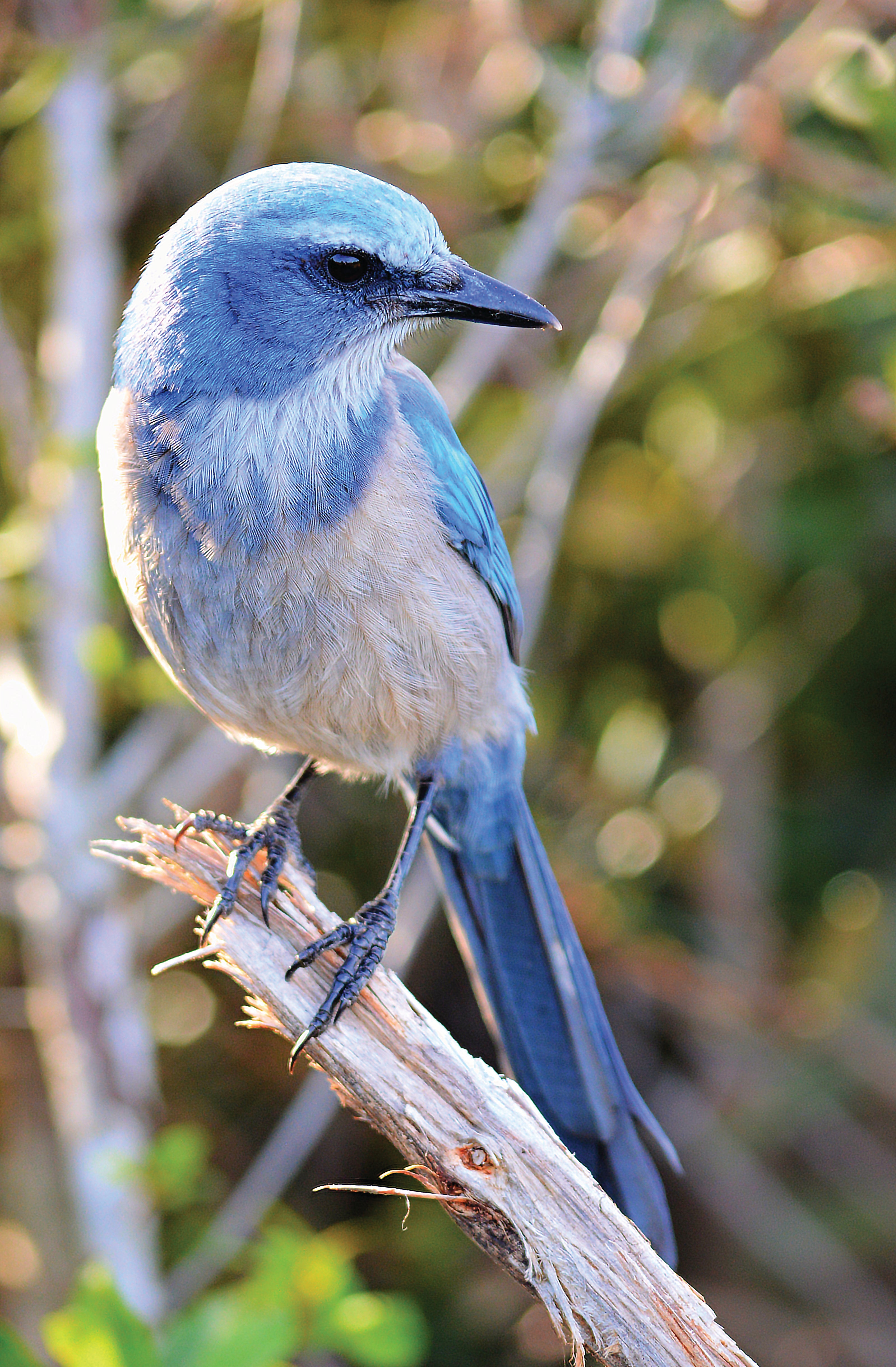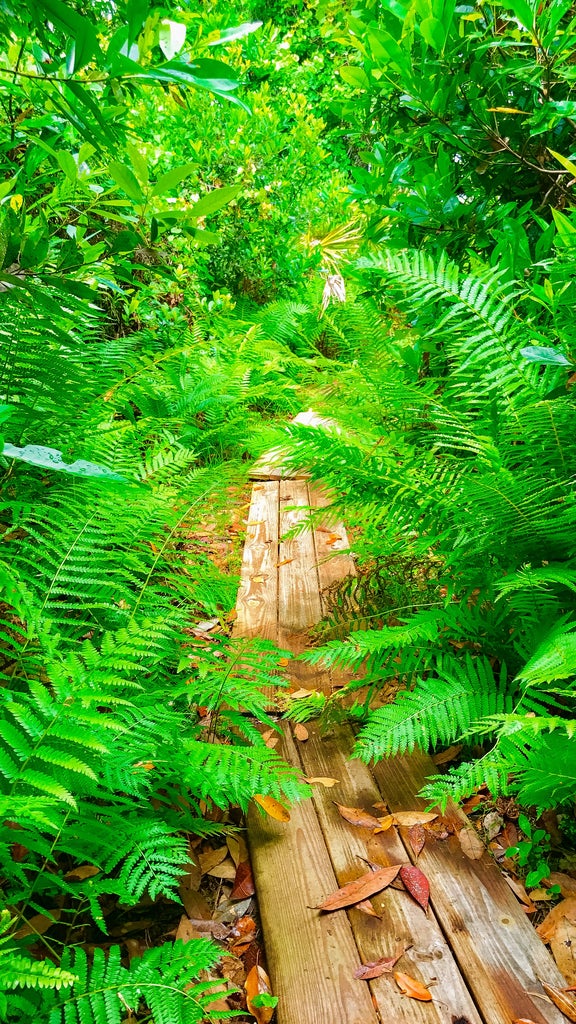
Experiences & Amenities
Experiences

Lake June-in-Winter Scrub Preserve State Park is a destination in the East Section of the Great Florida Birding Trail. The park has six distinct natural communities in its 845 acres that provide a diversity of habitat for the Florida scrub-jay, the Southern bald eagle, red-shouldered hawk, owls and other raptors.
Songbirds, migratory birds, wading birds and ducks are also found here. Over 100 species of birds have been identified on the trails in these peaceful woods. Scrub, scrubby flatwoods and a small area of mesic flatwoods comprise the upland habitats. Wetlands include baygall, seepage slope and seepage stream.
Lake June-in-Winter, a large 3,500-acre spring-fed lake, provides freshwater habitat. The shallow shoreline is below the picnic area on the far eastern edge of the park. Red-shouldered hawks and osprey are common. Pileated woodpeckers may be spotted. Herons, ibis, egrets and other wading birds feed in the shallow waters along the shoreline. Ducks may also be observed on the lake. Warblers, such as the Northern parula warbler, winter here.
For scrub and flatwoods species, birders may walk along the entrance road, around the picnic area and down the sugar sand trails and fire lanes into scrub habitat.
The Florida scrub-jay, Florida’s only endemic bird, is supported by over 500 acres of scrub. Currently, there are approximately nine scrub-jay family groups and 45 individuals at Lake June.
Birders may notice that some birds are banded. Lake June is a part of an ecosystem-wide monitoring program throughout the state to ensure that this highly endangered species will continue to thrive.
Walking down a sugar sand trail or a fire lane can be difficult, and birders should be aware that the trails in this harsh, sandy environment can be very hot. Visitors are advised to wear a hat, sunblock and sturdy footwear suitable for hiking. Bring water, a friend, compass or a cellphone on longer hikes.
Scrub communities are rare due to their presence on narrow geographic ranges, their small population sizes and because they support certain endemic species that are unable to survive anywhere else.
As you walk, please stay on the trail to help protect rare and endangered plant species. Your interest and assistance in protecting these “ancient seashores” is greatly appreciated.
Visitors may also walk the brief but challenging Tomoka Run Trail, which provides cool shade along a gurgling stream. The trail runs through pine flatwoods, scrub and the edge of a bayhead.
- For more information, call the ranger station at 863-386-6094.
Lake June-in-Winter, a 3,500-acre spring-fed freshwater lake, provides excellent recreational opportunities. Anglers can enjoy fishing, while boaters have easy access from several public boat ramps located on various sections of the shoreline outside the park.
There is currently no boat/canoe launch in the park, but lightweight canoes or kayaks may be launched by hand on the shoreline. Fishing is allowed in designated areas.
- All fishing within the park must conform to regulations concerning size, number, method of capture and season.
- A fishing license may be required. More information is available at the Florida Fish and Wildlife Conservation Commission’s website, Fishing in Florida.

Hiking is available, and visitors may walk the Tomoka Run Trail, which is a relatively short loop trail. The trailhead is located on the southeast side of the picnic area beyond the parking area gate.
The trail also can be accessed from the park entrance drive. The trail is densely shaded in some areas and crosses a gurgling seepage stream and runs through pine flatwoods, scrub and the edge of a bayhead. Tannic creeks bubble up from underground springs within the park.
The creeks are surrounded by lush ferns, bay trees, wild azaleas and other shade-tolerant plants. The dark water receives its lovely color from dissolved nutrients. Visitors interested in bird-watching and wildlife viewing will thoroughly enjoy walking this trail.
In stark contrast, sandy fire lanes and sugar sand trails can provide a workout through scrubby pine flatwoods and scrub habitat. The endangered Florida scrub-jay may be observed perching on scrub oaks in this “desert” ecosystem.
Visitors should be aware that the trails in this harsh, sandy environment can be very hot. Visitors are advised to wear a hat, sunblock and sturdy footwear suitable for hiking. Bring water, a friend, compass or a cellphone on longer hikes.
Scrub communities are rare due to their presence on narrow geographic ranges, their small population sizes and because they support certain endemic species that are unable to survive anywhere else.
As you walk, please stay on the trail to help protect rare and endangered plant species. Your interest and cooperation in protecting these “ancient seashores” is greatly appreciated.
Wildlife is often seen when least expected. Visitors hiking the Tomoka Run Trail may come upon an otter playing in the waters of a gurgling seepage stream or spy a bobcat disappearing into the woods. Black bear may amble out of the woods and walk on the grassy hill.
Sandy fire lanes may reveal the presence of rare and imperiled species such as the Florida sand skink and the gopher tortoise. Tracks of white-tailed deer, raccoon and bobcat may be examined.
Walk down to the lakefront and along the shoreline of Lake June-in-Winter and scout for wading birds, ducks, turtles and alligators. Look for Florida scrub-jays along the park’s entrance road and sandy fire lanes. Woodpeckers, red-shouldered hawks and other raptors may be sighted in the pines lining the entrance road and the trees surrounding the picnic area.
Wildlife is most likely seen in the early mornings, late afternoons and early evening hours close to dusk.
Amenities
Lake June-in-Winter Scrub Preserve State Park is committed to providing a variety of amenities accessible to all of our visitors. These amenities include:
- Picnic facilities with tables (no grill).
- Parking.
- Solar outhouse.
Service animals are welcome in all areas of Florida State Parks.